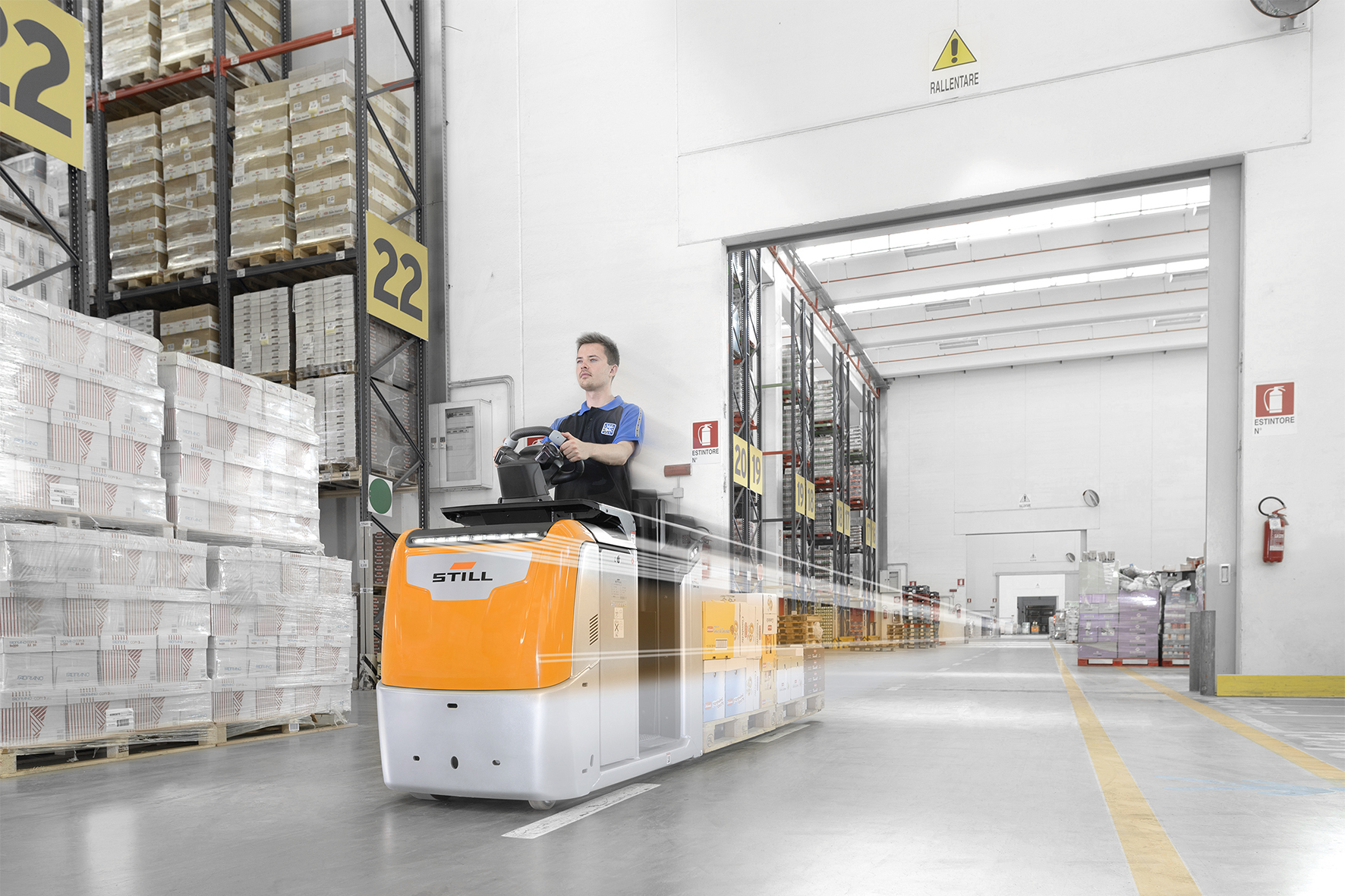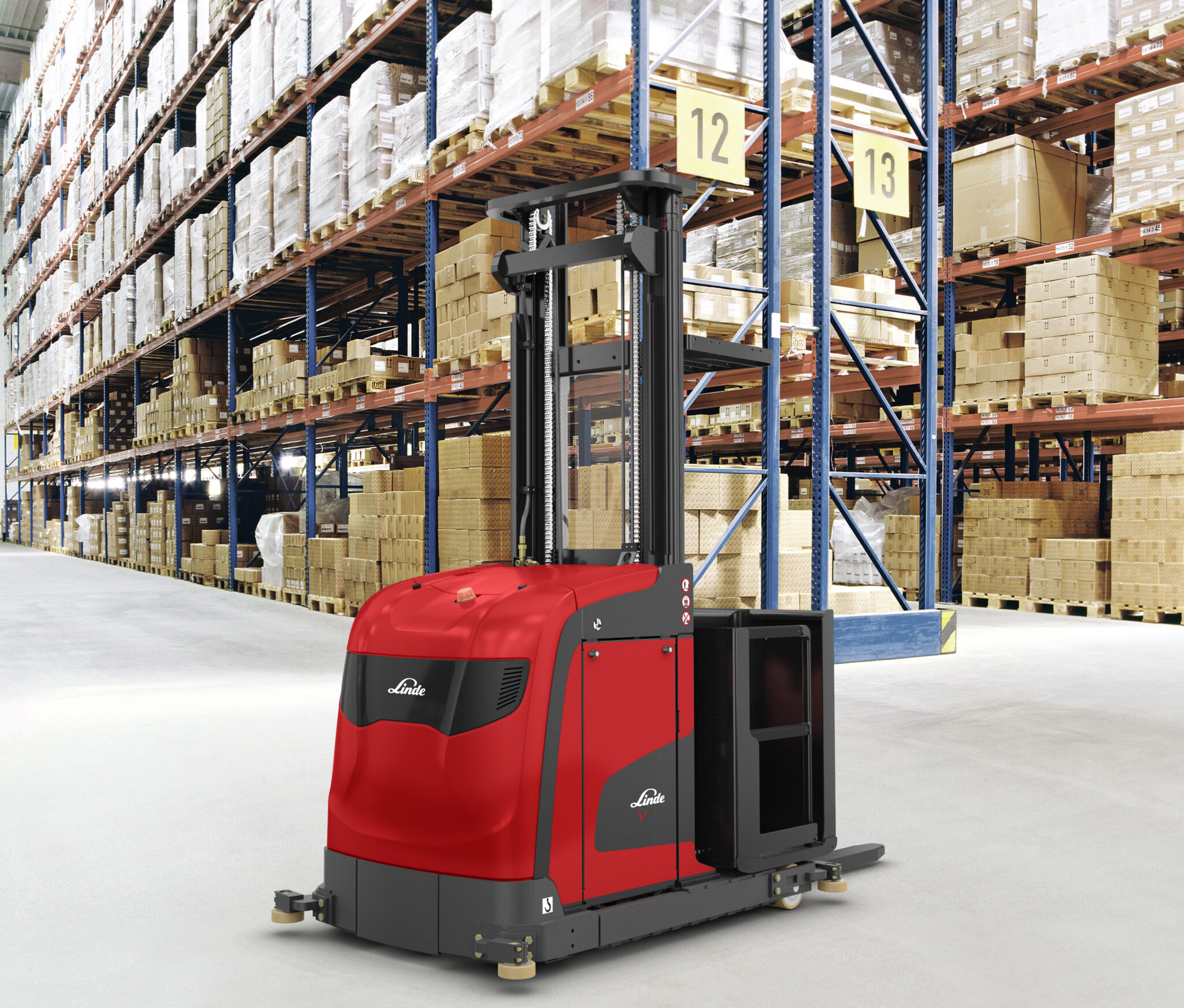Is order picking always the same? Not at all. Hardly any other field of activity in intralogistics is as diverse as goods picking. The range of applications is wide and requires appropriate technologies. STILL – one of the leading suppliers of intralogistics solutions and a successful market player for more than 100 years – says it can provide the right order picking vehicle for any customer requirement.
The requirements in order picking are diverse and so are the users’ needs for information. Is the picking to be done on the lowest shelf level or is it necessary to pick vertically – and if so, at what heights? In which industry will the picking be carried out? Which goods need to be picked – and are they rather large and bulky or small and heavy?
Also important: What kind of warehouse is it? Does the vehicle have to be designed to manoeuvre mainly in narrow spaces? Is it to be used in narrow aisles or is a combined use in narrow and wide aisles intended? And last but not least: what degree of automation is necessary and/or desired? There is a great variety of possible options, and STILL’s responses to customer requirements are comprehensive. The Hamburg-based company has the right vehicle for any application in its range.
“As different as the application profiles and thus the vehicles may be, certain requirements must be met in any case,” says Janos Poppe, product trainer for horizontal order pickers at STILL.
“Regardless of whether it is a classic order picker or a vehicle designed for narrow aisles: High reliability, energy-efficient use, easy battery handling and fatigue-free operation must be guaranteed. In addition, efficient work and high handling performance with our state-of-the-art vehicles are of course the focus of customer requirements,” adds Christian Ehlers, product trainer for vertical order pickers at STILL.
Just how varied intralogistics tasks are can be seen by looking at the different industries. In the automotive industry, mechanical engineering and the food industry in particular, but also in other trades and services, right through to retail, there is much more to it than ‘light’ order picking.
Aiming high in a confined space
If pallets need to be picked at very high levels or entire pallets stored and retrieved, this is where the MX-X from STILL comes into its own. With this truck, which is operated in narrow aisles, pallets can be picked at heights of more than 17.5m. Depending on the vehicle configuration, the MX-X can reach speeds of up to 14km/h with mechanical guidance and 10km/h with inductive guidance.
“With these travel speeds, the MX-X delivers maximum handling performance in any narrow aisle,” adds Ehlers. Lifting speeds of up to 0.6m/s and lowering speeds of 0.45m/s allow the MX-X to quickly store and retrieve pallets – or pick onto them – at any height. The tilt barriers enable a short distance between the driver and the pallet and thus fast and ergonomic order picking. “This means the vehicle delivers top performance in the tightest of spaces when picking at great heights,” says Ehlers.
Despite the great heights, the operator can work without worries. The design of the main and auxiliary lift provides impressive stability at any storage height. In addition, the MX-X is equipped with Active Floor Compensation (AFC). The AFC feature ensures that any unevenness in the ground between the left and right lanes is compensated for. With this assistance system AFC, STILL offers a real alternative to the costly reconditioning of the warehouse floor. In addition, the driver no longer feels the unevenness and thus always feels safe on the MX-X even at a height of 18m.
Master picking applications in wide and narrow aisles with ease
“Every order picking task should be easy to manage,” emphasises Ehlers. This is also what the EK-X series stands for. The EK-X up to 1,000kg, for example – just like its big brother, the EK-X up to 1,200kg – can be used flexibly and reliably in both wide and narrow aisles due to its compact and variable vehicle dimensions. It is used in a wide range of industries and applications. These include mechanical engineering companies, logistics service providers and central warehouses of large trading companies.
Thanks to its powerful, reliable and low-maintenance three-phase engines (with 24V as well as 48V battery), the vertical order picker reaches travel speeds of up to 11km/h and is able to transport loads weighing up to 1,000kg. The maximum reach height of the EK-X up to 1,000kg is 7.8m. “With the EK-X 10, the EK-X up to 1,000kg and the EK-X up to 1,200kg, our order-picking portfolio from STILL optimally covers customer requirements from the lowest level to the very highest heights,” says Ehlers.
The highlights of the EK-X series include innovative features such as Curve Speed Control or the OptiSpeed system. In addition, it is possible to use lithium-ion-based energy storage systems on the EK-X up to 1,000kg and 1,200kg. In connection with this technology, the opportunity charging option is also available. This connects the charger directly to the battery and thus enables fast, simple and uncomplicated intermediate charging. For customers who opt for a lead-acid battery in combination with “Li-ion ready”, it is also possible to prepare the vehicle for future opportunity charging.
Great focus on ergonomics and safety
When designing the EK-X up to 1,000kg, STILL’s developers placed great emphasis on ergonomics and safety. Thanks to the low cab floor height of just 200mm, the driver can reach the cab safely and without difficulty. The shock-absorbing cab floor takes the strain off the operator and a large-area presence switch allows a variable and comfortable standing position. On the vehicle, the operator not only has everything under control as well as a wide range of equipment options, but also optionally a driver’s cab that is 70mm deeper, which provides more freedom of movement.
Easy picking of heavy and bulky goods
For picking heavy and bulky goods on the EK-X up to 1,000kg, the truck has optionally been equipped with a walk-on pallet. “This makes it easy to pick heavy and bulky goods and contributes further to occupational health and safety,” explains Ehlers. A high level of safety is ensured by a contact switch and automatic locking of the pallet.
“Safety is the first priority, especially at great heights,” emphasises Ehlers. Thus, the EK-X up to 1,000kg has a sensor-controlled two-hand operation that guarantees accident-free operation, especially in narrow aisles. To ensure that the vehicle stays on track in narrow aisles, it is optionally equipped with mechanical or inductive guidance. “These and many more features stand for maximum user safety of our entire EK-X series,” says Christian Ehlers.
All-round talent especially for ground-level applications
For order picking tasks at ground level, STILL also has the right trucks in their product range. “The ideal trucks for order picking tasks at ground level are the horizontal order pickers in the OPX series by STILL,” explains Poppe. This is an all-rounder that can travel at speeds of up to 14km/h in the warehouse and has been specially designed for classic horizontal order picking.
“Nevertheless, the variety offered by this vehicle series is incredibly large,” says Poppe. It ranges from a simple vehicle with a load capacity of up to 1,200kg to load capacities of up to 2,500kg. Depending on the equipment, two pallets can also be transported and picked at the same time – also at an ergonomic working height of the forks to protect the backs of the employees during picking.
Picking in the second level
While the horizontal order pickers of the OPX series are mainly designed for picking in the ground level and the operator picks the pallet from the side of the vehicle, the vertical order pickers of the OXV series are also designed for picking work in the second level. The vehicle is equipped with a platform lift as standard, which enables the operator to pick directly onto the pallet when the platform is raised. “Unlike the OPX, which is designed for several pallets, the OXV transports exactly one pallet,” explains Poppe.
The vehicle, which travels up to 10km/h, can transport pallets weighing 700 or 1,000kg. Like the vehicles of the OPX series, it impresses with a high level of driving comfort and intuitive operator guidance. Simultaneous steering, lifting and driving is a breeze with the STILL Easy Drive steering wheel.
“In combination with the OPX and the EK-X order pickers designed for higher operations, the trucks of the OXV series perfectly round off the STILL portfolio in the order picker sector,” says Poppe.
Automation and autonomy in order picking
A few years ago, STILL also took a big step towards automation and autonomy – also with regard to order picking. Since 2016, the Hamburg-based company has been offering its customers not only the fully automated MX-X but also the autonomous version of the horizontal order picker, the OPX iGo neo. With the help of state-of-the-art sensor technology, the vehicle recognises its operator as well as its surroundings. By means of a multi-level safety concept including a pedestrian protection system, the OPX iGo neo protects people, warehouse equipment and goods. Based on the generated data and defined algorithms, the vehicle makes decisions: obstacles are avoided or the vehicle stops completely if the available space is too small to avoid the obstacles.
The OPX iGo neo significantly increases picking performance and reduces picking errors. On the one hand, because the autonomous helper takes over driving and steering during order picking and the operator can thus concentrate fully on the work. On the other hand, because up to 75% of the strenuous and time-consuming getting up and off the vehicle is eliminated and the walking distances with loads are greatly reduced.
Looking at STILL’s broad portfolio, Ehlers sums up: “It is STILL’s mission to offer every customer the right vehicle for any picking application.”











